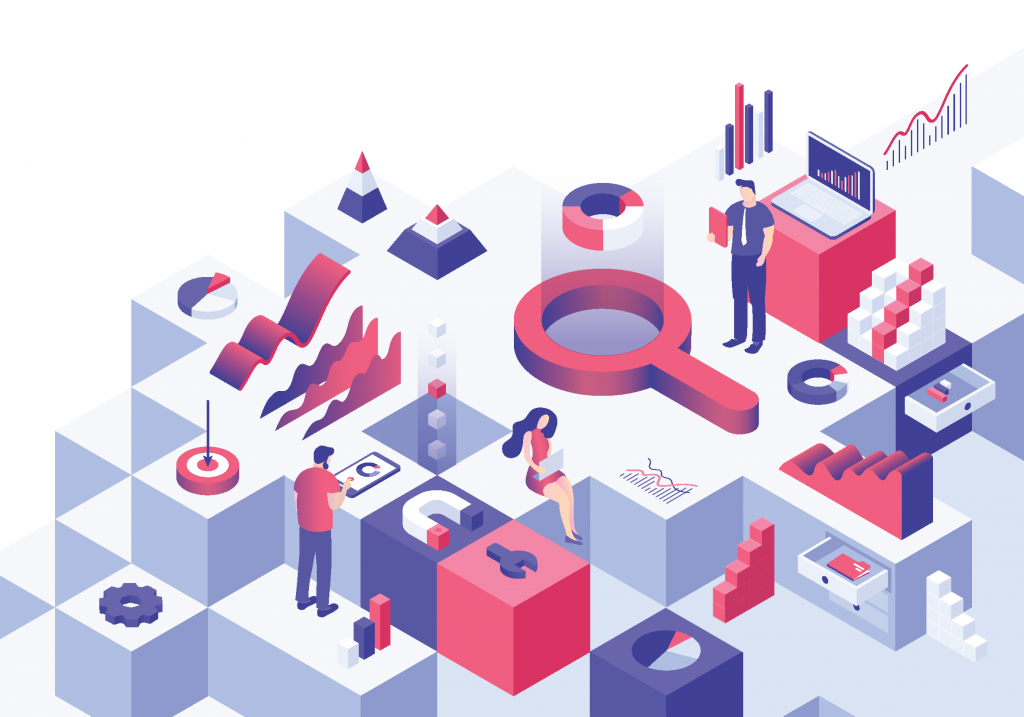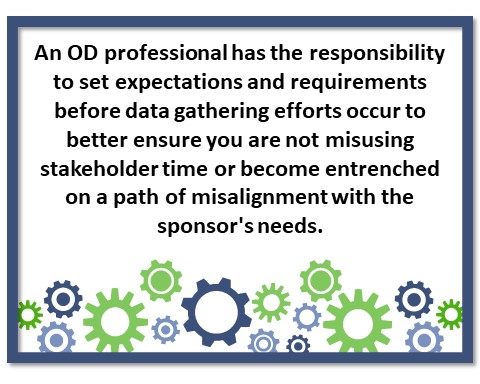Insight Paper May 22, 2019
The Fundamentals of Diagnosing Organizational Change
Key steps and solutioning will help facilitate stronger change management action.
I remember first hearing the term VUCA in a business context some years ago. V (volatility) U (uncertainty) C (complexity) A (ambiguity) is an acronym that is sometimes weaponized in a business atmosphere to denote the failing of it all – the unmanageable reality of various externalities that keep you and your business from succeeding. Factors, such as globalized talent pouring in, and an inter-connected consumer-driven world that places constant pressure on your organization’s public presence, drive companies to panic and align their workforces poorly. In time, the very foundations of organizations, institutions, for-profit, and non-profit companies are drastically altered from their original course of inception or adhered to organizational values. This is sometimes due to greed, pressure from competitors, industry shifts, or even hiring practices, to name a few. Regardless, there is largely only one remedy in almost every one of these situations. If the willpower and need from the leaders permits it, organizational diagnosis provides the answers they seek.
Organization diagnosis is an incredibly difficult mode of skill to both understand and communicate. It is primarily a professional skillset born out of the inefficiencies and cultural deficiencies in the corporate and public sector world. Academics have been theorizing that, with the right model or the right framework, we are able to quantify or benchmark a solution to tailor nearly all organization shortcomings. While grand in scope, this idealism is rooted in history and the lessons learned of the past. That’s primarily what makes Organizational Development & Change (OD&C) so compelling.

Each situation and each problem an OD&C professional must tackle is truly unique and based on a multitude of factors, such as corporate values or cultural norms. One must extract insight and case studies from the past to better prepare for the future. While OD&C models from the 1970’s may not be applicable to a contemporary office culture, they remain steadfast in their ability to inform and better prepare the OD&C professional to meet the problem head on and come to a more cultivated, well-rounded (or more modern) solution. Ultimately, OD&C diagnosis is a mental framework that provides guidance to professionals and academics so a better, more productive workforce world can take root.
Large companies often employ entire divisions of internal change managers and organization development professionals. Some may work in human resources while others work in internal corporate communications. Smaller companies usually rely on in-house departments or experts, such as strategy officers or people and development analysts. And, in many cases, bringing in external consulting firms, such as Trexin, is highly advised. External change agents can provide the outside knowledge and expertise needed to enact and recommend large, transformational change planning and execution – results of which can only be achieved through decades of working with your industry competitors, subject matter experts, and academics. Regardless of the direction your organization may take, there are key steps anyone can follow to more strongly initiate a diagnosis of your operations and ensure the change policy’s infiltration is long-lived.
Listed are some knowledgeable steps, when well-executed, that can supplement a successful delivery of change diagnosis (large or small):
SETTING EXPECTATIONS IS KEY TO FUTURE ADOPTION AND PREVENTS WITHDRAWAL OF THE CHANGE
You (and your team) must be honest and forthright about your own capabilities to execute an organization development analysis. Are you great at merging teams (or ideas), leading or facilitating focus groups, designing surveys, or maybe visualizing the data to better correlate to a greater operational story? It is critical that the organization development (OD) professional set expectations with the client or sponsor from the beginning. If the requirements are out of line with your abilities or maybe the expectations not in-line with your understanding of the current organization’s problem, then you will need to create room for discussion. An OD professional has the responsibility to set expectations and requirements before data gathering efforts occur to better ensure you are not misusing stakeholder time or become too entrenched on a path of misalignment with the business sponsor’s needs.
EXECUTING THE RIGHT MODEL IS IMPORTANT (BUT NOT EVERYTHING)
When you are selecting an OD&C model or framework to provide inspiration, remember that these models are born out of practicality to a particular case study or scenario. From the McKinsey 7-S to Open Systems Model or a custom Venn diagram, real world case studies have inspired OD professionals and academics to try and quantify workforce realignment strategies. You will be at your best when you can accurately and informedly disseminate between which OD&C model is applicable to which situation. This will involve extensive research and experience (in addition to failing once or twice) so you will know, based on an organization’s situation, which model may suit the visualization and communication of the diagnosis results aspect of the engagement. However, remember that the model or framework is not everything and, especially in OD&C, there are a multitude of other factors that impact your choice of communicating data, such as cultural workforce landscapes and human psychology/emotional response which feeds more strongly into “knowing your audience”.

KNOWING YOUR AUDIENCE (IS EVERYTHING)
Finally, a very important element to succeeding as an OD professional, especially in the assessment and feedback phases of the diagnosis, is the interpretation and understanding of everyone’s roles. When presenting your findings, you must make an effort to empathize with your audience and draw from their reactions. For example, maybe you are in a focus group and can follow-up with compelling questions based on a participant’s emotional cue. In addition, you may have an opportunity to speak with executive-level decision makers so your results and data should be translated into high-level but effective forms of communication. You must place you and your team in a position to anticipate questions at every level of the diagnosis: operations, technical, financial, executive, and compliance. Knowing who you are talking to and why is key to not only conveying your OD engagement story but building the confidence you will need with the sponsor/client/organization.
The following are pivotal challenge areas that are bound to creep up with any organization development diagnosis. When confronting roadblocks or impediments, your team will be better positioned to combat any setbacks by understanding potential issues, such as the below we are about to cover, and brainstorming potential workarounds should these issues play a prominent role in barricading your diagnosis from success. Each engagement and situation is varied. However, the variances are always supported by several major themes. Time, Access, and Goals are three primary obstacles that you and your team will have to overcome, regardless of industry or cultural background of your diagnosis candidate.
TIME MANAGEMENT
Time is a precious commodity. In a constantly evolving work/life balance world and the 24/7 communications apparatus we operate under, it is often difficult to request individuals to take time out of their formal work day to answer questions for you or listen to you speak about a topic they are not already familiar or aware of. You have to prep far in advance to make sure that participants and key stakeholders have the luxury of affording you interviews or answering your questions so your team can complete an adequate assessment phase diagnosis. This sometimes creates a situation wherein relationships are paramount. An individual’s time may be more manageable if a stronger relationship is built beforehand. In addition, once an employee or sponsor’s time is granted, you are forced to prepare extensively. Your questions and the knowledge you seek must be direct and specific. You are usually constrained to a set amount of time so you cannot divert from your purpose of information-gathering.
GOAL SCOPING
Creep scope is a very real thing in project and program management. Within organization diagnosis, it often exists solely to reap more benefit than initially established by the change agent and the sponsor. In some respects, it can be a domino effect of work undertaking. If a diagnosis proves effective or illuminates certain problem areas within an organization, a client or sponsor may request a doubling of efforts or an enlargement of responsibility. Only you can know the true worth of your abilities. Treading carefully is advised as a lack of necessary information or resources will inhibit one’s accomplishment of the new goal scope. Therefore, you must remain adamant about initial expectations and requirements when conversing with a client or sponsor. It must be clear and verified what and how you will conduct and present an overall diagnosis. If more is requested, include additional phasing into the project once the initial ask diagnosis is covered, communicated, and delivered.
ACCESS LOGISTICS
Like many OD professionals, access is a very influential factor that impacts the success of the entire engagement. You may need people, systems, technology, and historical records information access. Before you even step foot into an engagement, even before a “setting expectations/requirements phase”, you will need a list of general places and people that you or your team will require access to. These engagements are often limited in time, so the requests need to come early. This may include additional non-stakeholder information, such as historical email chains or employee records. You must grant yourself adequate time to apply for systems access, build relationships with individuals that grant the access, pass internal compliance exams, or go through compliant background checks. Regardless, access is key, and companies will continue to be protective and secure with their data and people. Successful OD professionals know when and how to ask the right questions and present the right needs when necessary to gain the access they desire to be successful.
*****
After an OD&C diagnosis is completed, we are left with a bucket of statistics, measurements, benchmarks, and qualitative insight. What we do with this information plays a crucial role in having a long-term, solidified impact on the organization. In addition to how these pieces of evidence should be visualized, we also need to understand the key stakeholders and the roles they will play in disseminating that information. If a consultant or OD&C professional presents key findings too soon or too late or, in some cases, misrepresents the data then the entire diagnosis is called into question by the client and the organization. One must visualize, state, and connect their data-gathering efforts to the overall purpose set by the initial requirements and expectations. The data gathered will play a critical role in ensuring the change effort or recommendation made by the OD&C professional is warranted and lasting.

